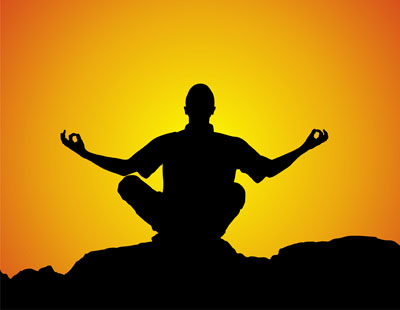 The more I think about it the more I am convinced that it really is, as the saying goes, ‘a mad, mad world’ and that the struggle to remain sane has to be waged, quite literally, on a daily basis.
The more I think about it the more I am convinced that it really is, as the saying goes, ‘a mad, mad world’ and that the struggle to remain sane has to be waged, quite literally, on a daily basis.
Try out this simple experiment to see what I mean: Stand on a street corner and watch people go by. Almost every adult you see is rushing about on ‘work’, looking preoccupied or miserable and driven by a frightening frenzy. That’s madness, in a way, you will admit.
This is how life is for almost all folks-- a non-stop race working for maximizing material comforts and possessions. Hardly any of us is at all conscious of the simple truth (which everyone knows but doesn’t dare talk about) that, sooner or later, death must come and then we must part with all the possessions that our relentless, almost life-long, activity is geared to acquiring.
In recent months, though, I have had the good fortune of meeting some rare souls who, in their own unassuming ways, defy the banality of ‘mainstream’ society’s understanding of ‘work’ and consumption being the fundamental purpose of life—which the ‘mainstream’ education system and media frantically promote. And this gives me some hope for a world that is teetering on the brink of disaster largely because most people have been made to believe that stimulating the senses and maximizing material comfort is what one’s purpose in life should be and that there’s no life beyond this one which one needs to bother about.
I met Rajesh just by chance the other day. In his early 30s, Rajesh was what would be called a ‘wildly successful’ software engineer. He earned a ‘handsome’ salary and was the typical ‘party animal’. Then, all of a sudden one day, he turned almost completely blind. His world, as you can imagine, turned on its head literally overnight. If I were him, I would probably have given up on life, but Rajesh did what few would ever think of. Believing his blindness to be the will of God, He took to meditation and made that his life. He now spends most of his waking hours in silent meditation and contemplation and listening to religious music. He can no longer work and maintain his earlier standard of material comfort. No longer does he go out partying. ‘You won’t believe how glad I am because of this,’ he explains.
Rajesh has lost almost all his earlier friends—the partying sorts—and prefers now to be by himself. ‘There’s a beauty in being alone, communing with God, which you simply cannot do if you are constantly in the company of others,’ he says.
‘I thank God for turning me blind,’ Rajesh said to me the other day, quite to my surprise. ‘All these years when my eyes were functioning I used them to look at the external world. Now that I am blind, I can focus all my attention to looking within myself. You may not believe it, but I am much happier now than I ever was.’
Rajesh really meant what he said, and I knew it wasn’t simply a way to help him reconcile with a situation he couldn’t change but had, instead, to put up with. I listened to him as he went on, amazed at his courage and the way he had uncomplainingly surrendered to God’s will. I had to admit that I might not have responded with quite the same acceptance if I had been confronted with the same predicament.
No longer able to work and earn, Rajesh might be considered a ‘useless escapist’ by ‘mainstream’ society’s standards. But as I now see it, he’s an amazingly successful person who, faced with incredible odds, succeeded in realising the futility of the mad race for name, wealth and fame, in pursuing which most of us spend our lives till we drop dead.
Rehana, a middle-aged woman, is another such blessed soul I recently had the opportunity to meet. She works as a reporter in a small magazine. She earns a modest salary, half of which she gives to her 80-year old father, and manages to save not more than three thousand rupees a month. She hasn’t much of a bank balance, but that doesn’t really trouble her. ‘God decides everyone’s provision, and I’m sure He’ll provide for me, too,’ she cheerfully says.
Some months ago, a close friend of hers offered to make out a fixed deposit, worth several lakh rupees, in the bank in her name. Rehana declined the offer, saying that she wanted to depend solely on God for her survival. Rehana declined another friend’s offer to include her name in her will for the same reason.
People like Rajesh and Rehana are hard to come by. They might be thought of as ‘eccentric’, ‘cop-outs’ or ‘failures’ by ‘mainstream’ society, but, as far as I am concerned, they’re just the people who make the world a place still worth considering living in.





Comments
Add new comment